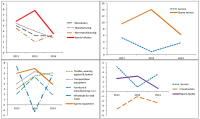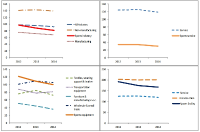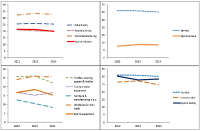
This study has analyzed 33 domestic games and 26 overseas games by targeting women curling teams of home and abroad, and looked into what main performance variables are, how level differences of domestic team appear, and from which variables differences between winning team and defeated team come out in overseas teams. Also, main strategies has been suggested that are used most commonly for kick-off offense and latter offense, blank strategy in order to prepare countermeasures, and digital media DB has been constructed that can utilize proper countermeasures easily and simply, and a model has been proposed for predicting victory/defeat. To accomplish such goal, a variance analysis has been carried out by dividing domestic teams into each level after calculating frequency and ratio with SPSS18.0, and t-test analysis has been carried out by overseas teams. Also, the accuracy of victory/defeat classifications has been suggested by using an artificial neural networks method. As a result, a lot of technical proficiency differences have appeared among Class A(upper rank), Class B(middle rank), and Class C(lower rank) in domestic teams. The ‘Guard’ which is an aggressive variable has turned out to be used more in upper and middle teams than in lower team, and the ‘Tab Back’ has been used more in upper rank than in lower rank. Furthermore, regarding the average comparison on victory/defeat in international games, victory teams have more significant difference(p<.05) than defeated teams in accuracy of shot techniques and strategy accomplishing abilities, and victory teams have been turned out to use less ‘Drew’ and more ‘Take’ than defeated teams significantly in Drew and Take’ technique variable. Finally, the accuracy of a prediction model has been 91.7% for learning and 92.9% for the test result to predict the victory/defeat in international games through the artificial neutral network analysis. The prediction accuracy of domestic games was 81.0% for learning and 71.4% for the test.


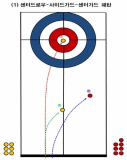

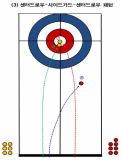
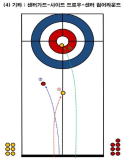

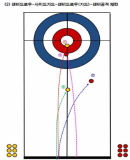
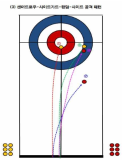
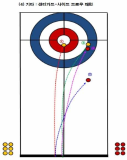
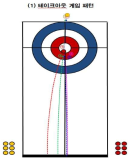
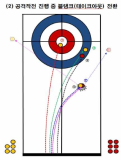

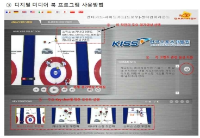

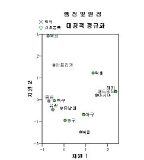
To activate the export of defense industry, our government approach a niche market by various advertising and revising policy. However, techniques of current Korea defense industry are difficult for market development of various aspects. Thus a new approach of overcoming existing export marketing strategy is needed. this study presents a strategy for exporting country, which is to activate the export of defense industry through military-sports diplomacy. The military-sports diplomacy is chosen because several cases confirm the sports diplomacy is an effective instrument which can develop political relationship between countries. a research needs to be done to check if Export target countries' preference for sports and possibilities of supporting should be investigated. by combining experts' opinion result using correspondence analysis, the following analyses of defense industry export activation strategy via Sports-diplomacy can be suggested. Overall, Sports policy action to expanse Export target geographical areas is strengthening ties for using soccer, badminton, hockey sports with each other. Detail, sports policy in the proportion of low-country exports must be to use badminton, hockey, rugby which prefer in asia area. and sports policy in the proportion of exports to the high country must be to use soccer, basketball, field and track events which prefer in Africa and Central and South America. area. In suggestion, The research concluded that information exchange between Defense Acquisition Program Administration and Korea military sports organization is needed, and the compatibility of exporting weapons to target countries is a priority while executing sports diplomacy.


This study aimed to compare professional sport consumers on the basis of their ideology, spectator motivation, and message framing. In order to answer the research questions, the study first examined whether message framing effects existed across the designated variables. The study also assessed whether there were any differences in progressive-conservative ideology and motivation across respondent groups. The participants were spectators of two professional sports, soccer and baseball, sourced from 9 stadiums. Data were collected by the researcher and 33 survey assistants, from May to August 2013. The results of a chi-square test, MANOVA, and MANCOVA indicated that significant effects in message framing existed across the two variables. The findings also showed differences in ideology and motivation across major variables (e.g., age, gender, sports, and choice of newspaper). Some issues including media communication strategies were discussed based on the results of this study.
PURPOSE Recently, the need to improve service quality to provide an ideal viewing experience for sport OTT service users has increased. This study aimed to analyze user reviews of the SPOTV Now app, an OTT service specializing in sports in South Korea, to identify major perceptions of viewers and suggest measures for improvement. METHODS Review data (8,512) recorded on the SPOTV Now app were collected from November 21, 2017 to November 30, 2023. LDA-based topic modeling analysis was conducted along with a series of data preprocessing processes. Sentiment analysis was carried out through machine learning logistic regression analysis and odds ratio scores were calculated. RESULTS A total of five topics were derived, including ‘member management service', 'service stability', 'sport streaming service', 'sport video service', and 'subscription service'. Sentiment analysis indicated that 'exclusive', 'server', 'payment', 'log-in', 'authentication', 'pay', 'subscription', 'advertisement', 'play', and 'loading' were the top ten keywords. CONCLUSIONS Sport OTT operators should be more responsive to user requests and feedback, and video playback and server error problems should be improved for service stability. It is necessary to secure diversity as well as exclusivity of content, in addition to minimizing advertising or preparing various rate types, so that app users feel that they receive high value for their money.
PURPOSE This study aimed to explore the ranking culture of Korean female professional golfers under the assumption that side-effects such as performance degradation and sports desocialization result from the culture. METHODS To collect data, semistructured, open-ended interviews were conducted with eight former KLPGA Tour players, and the data were analyzed through the inductive analysis method suggested by Hatch (2002). RESULTS Our findings were the following: (1) There has been an oppressive culture regarding the salutation attitude among Korean female professional golfers. (2) The ranking culture of Korean female professional golf players formed a background of voluntarily noticing seniors from junior players. (3) As part of subduing juniors who go against the hierarchy culture, the phenomenon of group bullying by senior players was found. (4) There are players who influx the KLPGA tour after their tour career in foreign countries becomes uncomfortable with the ranking culture of Korean female professional golfers, or in worse cases, they leave the tour because of maladaptation. (5) Rather than protesting or raising issues, parents of players, especially those of junior players who have suffered damage against the ranking culture tend to accept the practices and endure disadvantages. CONCLUSIONS Follow-up studies on ways to improve them and additional studies on ranking culture and side-effects that may occur between athletes in other sports are required to restore the ethics of Korean sports and ultimately normalize them.

This study aimed to analyze the patterns of service return and the 3rd stroke in relation to the winning and losing points in Badminton men's doubles matches. Especially the comparison of the patterns between rally point and service server game systems was made. Video records of 12 top elite teams were analyzed. As a result, there were significant differences in the total stroke patterns between the rally point system and the server game, and there was a higher offensive stroke tendency. After classification of situations with ‘after the service trial’ and ‘after the service return’, there were high number of winning ratio and offensive stroke in the after the service situations. There were no significant difference in the winning/losing points and winning ratio when the types of 3rd shot attempts were analyzed. I case of the win and lose in service return, there was a significant difference in the server game while not in the rally point system. Offensive stroke ratio in the server’s return categories and the service return strokes’ categories, and was no difference in shots after the return of service in the server team. From the investigation of offensive stroke ratio and winning ratio, there was a high ratio in the rally point system game but no difference in the server game. When aggressive service return took place, rally point system had higher winning ratio, but the server game system did not display such characteristic. Based on these results, recommendations of service anticipation and aggressive plays for Korean Men's doubles game have been suggested.

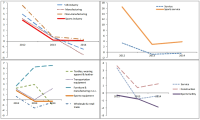
In this paper, we analyzed financial ratio of Sports Industry Enterprises in Korea from 2011 until 2014. We use Kis-Value data and extract 195 enterprise from it. And we compared the results with other industries which data were analyzed from the Bank of Korea. The results of the analysis are that the financial ratios of the sports industry is higher than other industries. This shows that the management conditions in sports industry are better than the other industries. In particular, among the sports industries, the management condition in sports service industry shows better states than other sports industries and other industries. This indicates that the sports service industry is a high value-added industry and growth rate of this industry is much faster than other industries. Growth rate of sales of Sports industry in 2014 was 0.1% whereas growth rate of sales of all industries was –1.5%. Also, growth rate of total assets of Sports industry in 2014 was 3.5% while growth rate of sales of all industries was 3.0%. So, growth ratio of the sports industry was higher than all industries. On the other hand, growth rate of tangible asset which represents the investment in fixed assets was 1.9%, which was lower than that of all industries 2.5%. Through operating income to sales, we can know the profitability of company from operating activities. Operating income to sales of sports industry in 2014 was 9.5% whereas operating income to sales of all industries was 4.3%. Especially sports service industry increased 24.6% in 2014. Income before income taxes to sales was 10.1%, which was higher than all industries 3.9%. In particular sports service industry was 28.3%. It shows that the sports service companies have issued a profit through strong corporate activities. Debt ratio of the sports industry in 2014 was 80.9% while it was 91.9% for all industries. Debt ratio of sports facilities industry was 166.9% that is higher than the average of all industries. But the debt ratio of the sports service industry was 29.9%, it can be seen considerably lower than the average of all industries. Total borrowings and bonds payable ratio of the sports industry was 19.8%, it can be seen lower than the 25.3 percent for all industries. Cash flow coverage ratio which represents the ability to afford the interest and debt to cash income. Sports industry rate was 25.4%. It was lower than the all industry's 62.7% and it indicates sports industry is financially not good. So, we know that sports service industry was financially not healthy. Business analysis results of sports industry of Korea appeared better than other industries. But business conditions are getting worse and, like any other industry. Thus, through the business analysis, we should prepare substantiality of management. And we should plan productivity improvement and business strategies for the changing business environment.

